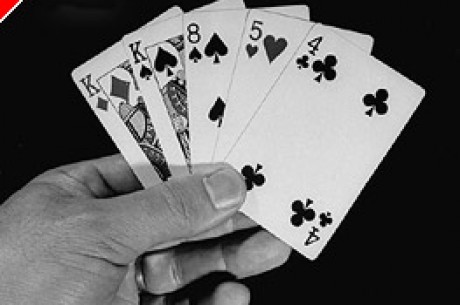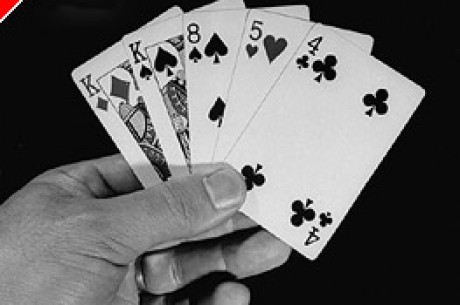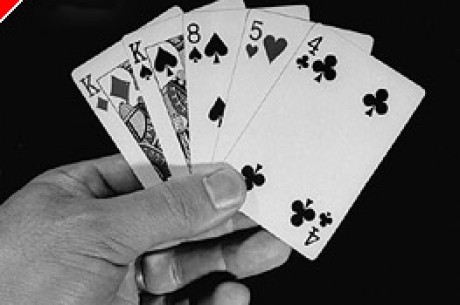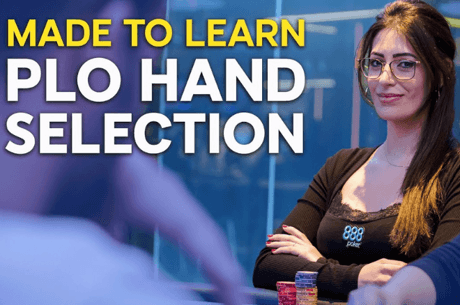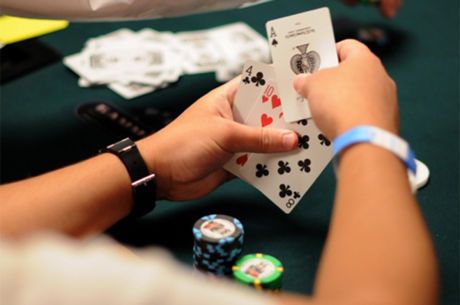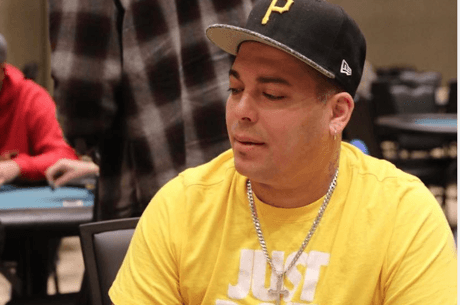Talking Omaha Poker - You Must be Nuts!
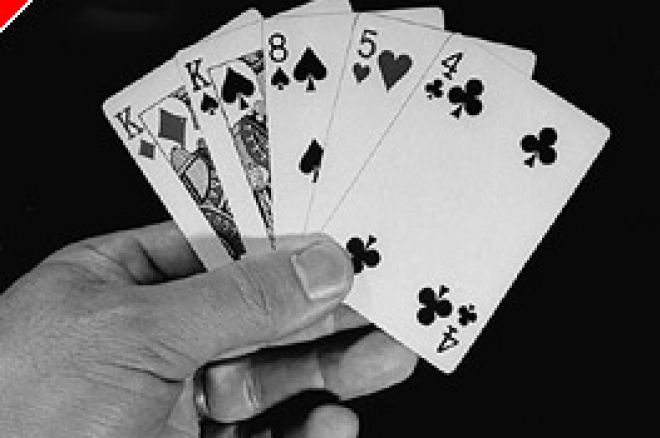
Tony is a regular on-line and card room player living in England. He mostly plays Texas Hold'em and Omaha (High and Hi/Lo) at fixed, pot and no limit, at both cash and tournament tables.
You must be nuts! That is the sort of thing you might hear from a regular Texas Hold'em player if you try to explain to him that you are tempted to - and often do - fold a nut straight at the flop when playing Omaha High.
The "nuts" at Omaha is not the same as the "nuts" at Texas Hold'em. It just isn't! At Omaha, you are playing against not only the flop cards but also the fact that each opponent in the pot is holding six different hands (any two hole cards from four can be computed six ways), any one of which could connect very nicely indeed with the next cards to come. A player with such a wide variety of potential hands is to be feared if he has had the good sense to wait for his opportunity and strike when he has six potentially good hands, not one or two and some rags. As Kd 8c 4h is a prime example of a poor Omaha hand.
What happens so often of course, particularly at the low limit end of the spectrum, is that many players have a vague set of rules the first of which says "I must see a flop". This is so regardless of the state of their four hole cards! Yes, your hole cards give you a choice of possible hands, but you should also know that poker is a game of percentages and probabilities. If you enter a pot with a hand that has started off as an average dog and needs specific combinations to hit the flop to make it playable, most of the time it will not be playable after the flop and you will lose on the averages because of a constant drip-drip of pre-flop money going down the plughole.
Your hole cards need to be loaded with ammunition to allow for as many opportunities as possible after the flop has come down. Without back-up, you are running alone and are likely to be shot down.
Take the hand mentioned just now, As Kd 8c 4h. In here, there are no flushes because each card is of a different suit. Even if the 8 and 4 were "suited", that does not constitute strength at Omaha because they are low cards. What else? Straights are always handy but all you have are three possibilities. The five board cards have to show you QJT or 567 or 532. It is asking a great deal to expect this. What if the flop showed 886? OK, you have a set with Ace kicker. Someone else may have 66xx or T975 in their hole cards. You might already be behind or face a huge draw. Overall, the likelihood of seeing cards on the flop that make you confident enough to bet out are severely limited. If you fold pre-flop, it has cost you nothing and you wait for better looking prey armed with heavier weapons.
Let's just see what might have happened if you did flop some good cards with your AK84 rainbow, say Qs Jd Td. It's the nuts!
You are in a $0.5/$1 Omaha High pot limit game in the big blind. There had been two $1 limp bets before you and the button raised to $3. You made it up to $3 and the other two called. The pot now contains $12. After the flop of QJT, you decide to bet half pot with the nut straight hoping to keep one or more interested. You bet $6 making the pot up to $18. One player folds and the next re-raises you with a minimum $12 bet. The button calls the $12 and raises the pot a further $42. You now face a $54 call bet or you could make a big pot re-raise that would in fact put you all in for your remaining $80. You might think no more of it. You have the absolute nuts on the flop and stick them in. The pot is now $164. If the others merely call, the pot will be $270, and that is the maximum you will win. The other two could re-raise each other if they have the funds but they will be playing for a side-pot to that extent.
Now, let's just sit back and consider your reaction after the players behind you raised and re-raised your initial $6 bet. Why did they do it? The first player only put in a minimum $6 raise over your bet. That suggests a bit of strength but could be a feeler bet. The button had no such qualms. He was at you in a big way. Perhaps he also has AK and is equally sold on the nuts. He might have QQxx as he was a mild raiser before the flop. Maybe he has two diamonds one of which is Ad, giving him a nut flush draw.
Whatever the case, you are up against two players who both raised your first bet with Qs Jd Td on the flop. You have the nut straight but no way of improving your position. By putting in the whole of your stack on the flop, you are in the pot at maximum 2/1 money odds if both call your bet, and the button is sure to. If one player has AK-rag-rag and another has a flush draw with rags, where does that leave you? If one player has QQxx and another has a flush draw, what about that? Or say one has both AK and a flush draw and the other QQ98. All these things are possible, and likely.
Your "expected equity" (which might vary at the margins depending on suits and certain cards held by the other players) of seeing a turn and a river card all-in and winning the whole pot in each of those three cases is:
Player 1 = AKxx; Player 2 = flush draw: Approximately 30% because you will tie at best with the other AK hand.
Player 1 = QQxx; Player 2 = flush draw: Approximately 35% due to one player having 8 outs for the flush (allows for your own diamond and assumes the other hand has none) and the other has 7 outs before the turn and up to 10 outs after the turn for the full house.
Player 1 = AKxx + flush draw; Player 2 = QQ98: Approximately 17% because you will tie at best with the other AK hand and either player can improve to beat you with either a flush or a full house.
The third scenario has to be feared especially and, in Omaha, you should fear the worst. The point is that it is quite likely, based on the betting that you are on a hiding to very little by going all-in. You are quite likely to be facing a poor return even with two players all-in with you. Often, only one will be in and it could be just as black for you.
Folding the nuts at the flop can be the correct course to take if there is evidence that other players are likely to have outdraws. If your hand also has a lot of outdraws then that is a different scenario entirely. By all means lump it all in then!
This brings us back to the beginning. The foundations for profitable Omaha have to be in place before building the pot. Always go in fully armed and ready for opportunities by making sure all four hole cards have a role to play.
TB
27-1-06
Ed note: Good Omaha action at Doyle's Room

